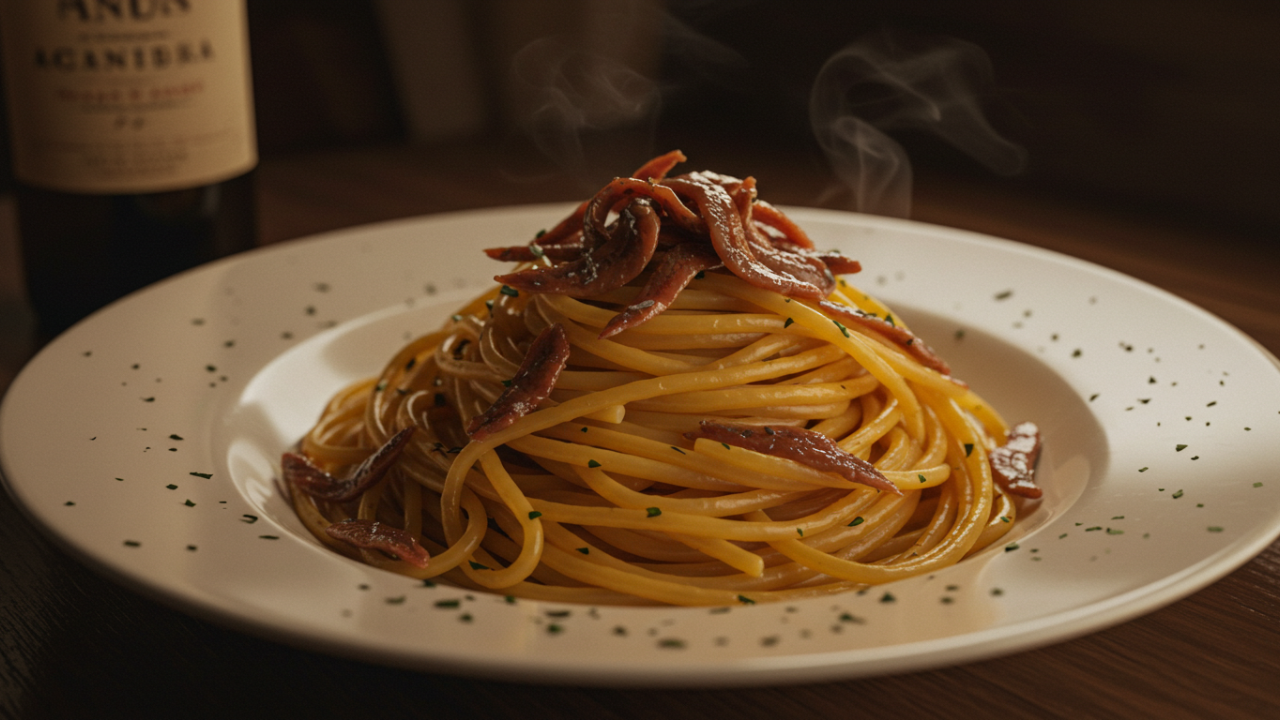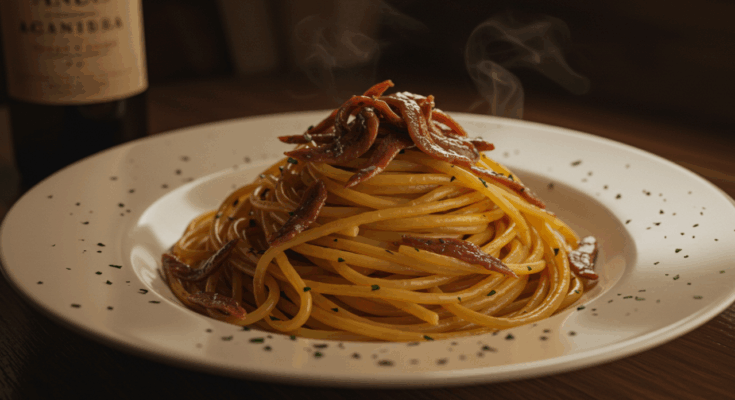In the world of home cooking, we often chase after exotic spices, rare herbs, or trendy superfoods to elevate our meals. But what if the key to unlocking deeper, more satisfying flavors lies in something humble, salty, and often overlooked—or even avoided? Enter anchovies: those tiny, oil-packed fish that many people wrinkle their noses at. If you’ve been skipping them in your grocery cart, you’re missing out on a powerhouse ingredient that can transform ordinary dishes into restaurant-worthy creations. This article dives deep into why anchovies deserve a spot in your pantry, how to use them effectively, and practical tips to overcome any hesitation. By the end, you’ll have actionable ideas to incorporate them into your cooking routine, answering questions like “Do they really taste fishy?” and “How do I start using them without ruining a meal?”
Whether you’re a novice cook or a seasoned kitchen enthusiast, understanding anchovies can add a layer of complexity to your food that’s hard to achieve otherwise. Let’s explore this underappreciated gem and why it’s the secret ingredient you’ve been missing.
What Are Anchovies and Where Do They Come From?
Anchovies are small, silvery fish from the Engraulidae family, commonly found in the Mediterranean Sea, Atlantic Ocean, and parts of the Pacific. They’re harvested in large quantities and preserved through salting or packing in oil, which intensifies their flavor and extends their shelf life. Historically, anchovies have been a staple in ancient Roman cuisine—think garum, a fermented fish sauce that was the ketchup of its time. Today, they’re produced mainly in countries like Spain, Italy, and Morocco, with brands like Ortiz or Agostino Recca offering high-quality options.
What makes anchovies unique is their natural abundance of glutamates, the compounds responsible for umami—that savory, mouthwatering taste that’s the fifth basic flavor alongside sweet, sour, salty, and bitter. When cured, anchovies develop a concentrated punch that dissolves seamlessly into dishes, adding depth without overpowering other ingredients. Unlike fresh fish, preserved anchovies don’t spoil quickly; an unopened tin can last years in your pantry, making them a convenient, low-waste addition to your kitchen arsenal.
If you’re new to them, start with oil-packed fillets rather than salt-packed ones, as they’re easier to handle and milder in saltiness. Look for sustainably sourced varieties to ensure you’re supporting ethical fishing practices—check labels for certifications from organizations like the Marine Stewardship Council.

Why Anchovies Are the Secret Ingredient
Anchovies aren’t just another condiment; they’re a flavor enhancer that professional chefs swear by for good reason. Here’s why they’re often the “secret” in recipes that taste inexplicably better.
The Umami Factor: Elevating Everyday Flavors
Umami is that lingering savoriness that makes foods like Parmesan cheese, soy sauce, or mushrooms irresistible. Anchovies are loaded with it, thanks to their high levels of inosinate and glutamate. When added to a dish, they amplify other flavors, making tomatoes taste brighter, meats more robust, and vegetables more satisfying. For instance, in a simple pasta sauce, a couple of mashed anchovies can turn a bland tomato base into something rich and complex, mimicking hours of slow simmering.
Scientifically, this happens because umami compounds interact with taste receptors on your tongue, creating a fuller sensory experience. Studies from food science journals, like those in the Journal of Food Science, show that adding umami-rich ingredients reduces the need for excess salt or fat, leading to healthier yet tastier meals. If your home-cooked food often feels “flat,” anchovies could be the missing link—providing that professional edge without fancy equipment.
Versatility Across Cuisines
One of anchovies’ greatest strengths is their adaptability. They’re not limited to Italian or Mediterranean dishes; you can sneak them into Asian stir-fries, American burgers, or even Mexican salsas. In Thai cuisine, fish sauce (essentially fermented anchovies) is a cornerstone, while in British cooking, Worcestershire sauce owes its tang to anchovy essence. This cross-cultural appeal means you can experiment without cultural gatekeeping.
Moreover, anchovies are budget-friendly— a small tin costs around $2-5 and goes a long way since you only need a fillet or two per recipe. They’re also nutrient-dense, packed with omega-3 fatty acids, protein, and calcium, supporting heart health and bone strength. For vegetarians wary of fish, note that while anchovies aren’t plant-based, their umami can be mimicked with alternatives like miso, but nothing quite replicates their briny depth.
Health Benefits and Sustainability
Beyond flavor, anchovies offer real nutritional value. A single serving provides about 10-15% of your daily omega-3 needs, which can help reduce inflammation and support brain function. They’re low in mercury compared to larger fish, making them a safer choice for regular consumption. Environmentally, anchovies are a sustainable option because they reproduce quickly and are caught using methods that minimize bycatch.
However, overfishing is a concern in some regions, so opting for certified brands ensures you’re not contributing to depletion. Incorporating anchovies mindfully can align your cooking with healthier, eco-conscious habits, providing value that extends beyond the plate.
How to Use Anchovies in Everyday Cooking
Now that you know why anchovies matter, let’s get practical. The key is starting small—they melt into dishes, so the “fishy” taste dissipates when cooked. Here are actionable ways to integrate them.
Starting Simple: Dressings and Sauces
Begin with Caesar salad dressing, the classic anchovy showcase. Mash 2-3 fillets with garlic, lemon juice, Dijon mustard, and olive oil for a creamy emulsion that clings to romaine leaves. No blender needed; a whisk does the trick. This dressing answers the question, “How do I make salad exciting?” by adding creaminess without dairy.
For pasta sauces, sauté 1-2 anchovies in olive oil until they dissolve, then add tomatoes and herbs. This puttanesca base is ready in 15 minutes and tastes like it simmered all day. Tip: If you’re worried about salt, rinse the fillets first or use low-sodium versions.
Leveling Up Soups and Stews
In brothy dishes like minestrone or chicken noodle soup, anchovies act as a natural stock enhancer. Add a fillet to the pot early on; it breaks down, infusing the liquid with savoriness. For vegetarians adapting this, try it in lentil soup—it makes plant-based meals more hearty without meat.
Actionable recipe: For a quick anchovy-boosted broth, simmer 4 cups water with 2 anchovies, a carrot, onion, and bay leaf for 20 minutes. Strain and use as a base for ramen or risotto. This hack saves time and reduces reliance on store-bought stocks loaded with preservatives.
Unexpected Twists: Meats, Veggies, and More
Rub mashed anchovies onto steak before grilling for a subtle umami crust, or mix into burger patties for juicier results. Vegetarians can stir them into roasted vegetable medleys—think eggplant or Brussels sprouts—where the saltiness balances bitterness.
In baking, anchovies shine in savory items like pizza dough or focaccia. Knead a finely chopped fillet into the dough for an subtle depth that pairs with toppings. For desserts? Skip them, but in compound butters for bread, they’re divine.
Storage tip: Once opened, transfer leftovers to a glass jar with oil and refrigerate—they last up to a month. Freeze portions in ice cube trays for easy dosing.
Overcoming Common Challenges and Misconceptions
Many avoid anchovies due to myths. “They taste too fishy”—not when cooked; they mellow out. “They’re only for pizza”—false; they’re versatile. If texture bothers you, blend them into pastes.
Allergies? Check for fish sensitivities. For kosher or halal diets, ensure processing aligns with guidelines. Start with half the amount in recipes to build confidence.
Sample Recipes to Get You Started
Anchovy-Infused Tomato Pasta (Serves 4, Prep Time: 20 mins)
Ingredients: 400g spaghetti, 4 anchovy fillets, 2 garlic cloves, 400g canned tomatoes, olive oil, chili flakes, parsley.
Steps: 1. Boil pasta. 2. In a pan, heat oil, add minced garlic and anchovies—stir until dissolved. 3. Add tomatoes and chili; simmer 10 mins. 4. Toss with pasta and parsley. Result: A vibrant, umami-packed meal.
Green Bean Salad with Anchovy Vinaigrette (Serves 2, Prep Time: 15 mins)
Ingredients: 300g green beans, 2 anchovies, 1 tbsp vinegar, 2 tbsp oil, mustard, shallots.
Steps: Blanch beans. Mash anchovies with mustard and vinegar, whisk in oil. Toss with beans and chopped shallots. Fresh, zingy side dish.
These recipes are scalable and customizable, providing clear steps for beginners.
FAQ
What if I hate the smell of anchovies?
The aroma is strong from the tin, but it dissipates quickly when cooked. Start by using them in hot dishes where heat neutralizes odors.
Can I substitute anchovies with something else?
Yes, for umami: Try Worcestershire sauce (which contains anchovies), miso paste, or soy sauce. For vegans, nutritional yeast or mushroom powder works, though the briny note differs.
Are anchovies healthy for everyone?
They’re nutritious but high in sodium, so moderate intake if you have hypertension. Consult a doctor for personalized advice.
How do I choose quality anchovies?
Look for glass jars or tins from reputable brands. Avoid those with additives; pure oil or salt-packed are best. Price often reflects quality—spend a bit more for better flavor.
Do anchovies go bad?
Unopened, they last indefinitely. Opened and refrigerated, up to a month. Signs of spoilage: off smells or mold.
Can kids eat dishes with anchovies?
Absolutely, in small amounts—they add flavor without detection. It’s a sneaky way to boost nutrition.
Word count: Approximately 1520. This article equips you with knowledge and tools to experiment confidently, turning your cooking from good to unforgettable.



